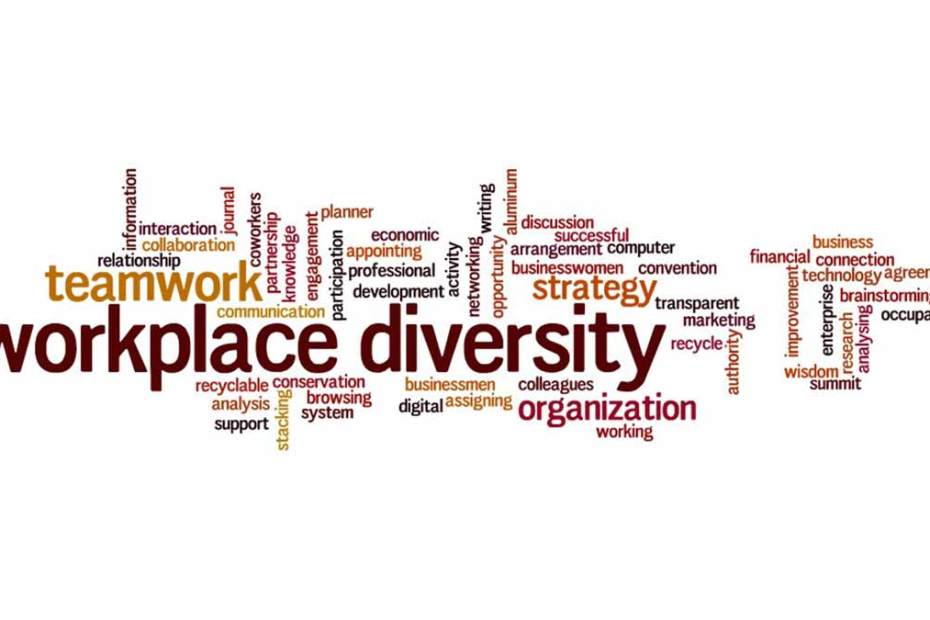Values That Drive Disparity—Hidden in Plain Sight
Below is the first article in a series exploring topics and learning from the 2021 NW Diversity Learning Series – Speak Up, Speak Out: Get into Good...
5 min read
 Joseph Marth PhD
:
May 16, 2020 3:44:15 PM
Joseph Marth PhD
:
May 16, 2020 3:44:15 PM

Perhaps you are like many executives and human resources professionals – you’re uncertain about how to get Diversity & Inclusion (D&I) off the ground in your organization. Or perhaps D&I efforts are underway, but not gaining any traction. In either situation, this article is for you!
First and foremost, for D&I to thrive in an organization, the organization’s senior leaders must do three essential things:
Unfortunately, D&I is often implemented tactically without putting in place the strategic foundation that is essential for success. This results in many start-and-stops, set-backs, and ultimately, its failure in the organization.
Let’s look at an example. Say an HR Manager instructs a recruiter to focus on developing a more diverse candidate pool to help increase diversity in the organization. However, the company’s senior leaders have not yet made D&I a strategic imperative. Strategic D&I initiatives such as building an inclusive culture and training managers about unconscious bias when hiring have not been addressed. This is a common mistake. Without that groundwork, recruiting more diverse talent will not lead to hiring and retaining a more diverse workforce. And for those who do join the organization, turnover is a likely result as the company’s culture is not an inclusive one. The new hire likely won’t experience a sense of belonging and will move on quickly.
To implement D&I strategically and tactically organizations must do the important strategic work before the tactical work. A group of international D&I experts who established the Global Diversity & Inclusion Benchmarks (GDIB) call this strategic work the “foundation.” Establishing a strong D&I strategic foundation enables the organization to identify and prioritize the tactical D&I work needed to accomplish the strategy.
We recommend a five-step strategic approach to Diversity & Inclusion:
The senior leaders of the organization are responsible for determining the D&I Business Case. They must articulate how D&I will specifically benefit the organization. For many organizations, the Business Case reflects these D&I benefits for the organization:
All organizations – whether non-profit or for-profit – function at different levels of D&I Maturity in their key macro-areas. These macro-areas are organizational culture, HR (people) policies and practices, management (leadership), and external relations. Therefore, a good D&I maturity model can be instrumental in creating the D&I Vision and Roadmap.
While there are a fair number of D&I maturity models out there, almost none of them include an actual validated organizational assessment tool. Archbright uses one such valid and reliable maturity assessment tool with our clients, the Spectra Diversity Inclusion Assessment™. Spectra Diversity’s Maturity Model has five levels:
Diversity & Inclusion is not seen as a “real” issue. The organization lacks policies and procedures to address Diversity & Inclusion. The work atmosphere may feel hostile to employees who are perceived as “different.” The organization could be either mono-cultural or consist of segregated workgroups with a lack of trust.
The organization follows basic federally mandated anti-discrimination law to avoid negative consequences. The focus is on treating everybody the same way. The organization tends to be reactive and often stops any initiatives once they are in compliance.
The organization views Diversity & Inclusion as a key driver of organizational efficiency, employee engagement, and/or opportunities to expand market opportunities. There are measurements in place to evaluate Diversity & Inclusion initiatives. There is some infrastructure (e.g., Diversity & Inclusion council, employee resource groups, etc.). Diversity & Inclusion are aligned with the organization’s mission and vision. The organization works to promote inclusion.
Diversity & Inclusion have been integrated into all aspects of the organization and is a core value. Policies, practices, and procedures are inclusive. Employees are committed to diversity and see themselves as responsible for creating an inclusive culture for all.
Diversity & Inclusion is part of everyday business, fully integrated, and part of the organization’s cultural norms. The organization has its Diversity & Inclusion best practices emulated by other organizations.
Once an organization understands its current D&I maturity level in key organizational areas, its leaders can then create and implement the D&I Vision and Roadmap.
The D&I Vision is a succinct statement that tells where the organization wants to be in its D&I maturity. It also includes when the organization commits to achieving the D&I Vision. With the D&I Vision set, leaders then develop the D&I Roadmap, which outlines the organization’s D&I initiatives and priorities to achieve the D&I Vision.
The saying goes: Have a plan and work the plan. It’s essential to execute the plan effectively. Otherwise, the plan is worthless. So, a critical component to implementing the D&I Vision and Roadmap is having mechanisms in place that support leadership accountability for the individual D&I initiatives’ success.
One such mechanism is having the organization’s senior leaders be the Project Sponsors of the D&I initiatives, with one senior leader per initiative. They then would follow good project management tenets by regularly updating their peers on the status of the D&I initiative they are sponsoring – including roadblocks and setbacks – and how they’re going to get it back on track and make it to the finish line. The most senior leader (e.g., CEO, President, Executive Director, Managing Partner, etc.) also must support their team of senior leaders and hold them accountable for the results of the D&I initiatives.
For organizations that are just beginning their D&I efforts, typical D&I initiatives include:
Most organizational leaders and employees don’t come to our workplaces with a complete set of D&I competencies. Like the organization, team members are functioning at various levels of D&I maturity. So, organizations must be deliberate in strengthening the D&I Competencies of all employees. A Core D&I Competency often includes having employees:
Once employees have developed the Core D&I Competency, other more advanced D&I competencies can be built to support achieving greater D&I maturity.
When steps 1-4 are complete, it’s time to “Rinse & Repeat” – that is start back at Step 1. Organizational leaders should:
If you’re an organizational executive or HR professional reading this article, you likely have realized that the D&I strategic approach outlined here mirrors most of the common strategic approaches taken by organizational leaders in other areas of running their businesses. Archbright can help you and your organization accomplish this important strategic D&I work with our solution Archbright Advance.
To create positive change and increase inclusivity in your workplace, Archbright Advance will identify your organization’s current state, help develop your Diversity & Inclusion (D&I) Roadmap, and deliver impactful employee training. For more information on Archbright Advance, please contact info@archbright.com.

Below is the first article in a series exploring topics and learning from the 2021 NW Diversity Learning Series – Speak Up, Speak Out: Get into Good...

The What and Why of Succession Management Did you know that we are living through a time of great workforce upheavals? There are some significant...

On March 11, at the same time the world tilted due to a global pandemic, my husband had emergency brain surgery and was diagnosed with Glioblastoma....